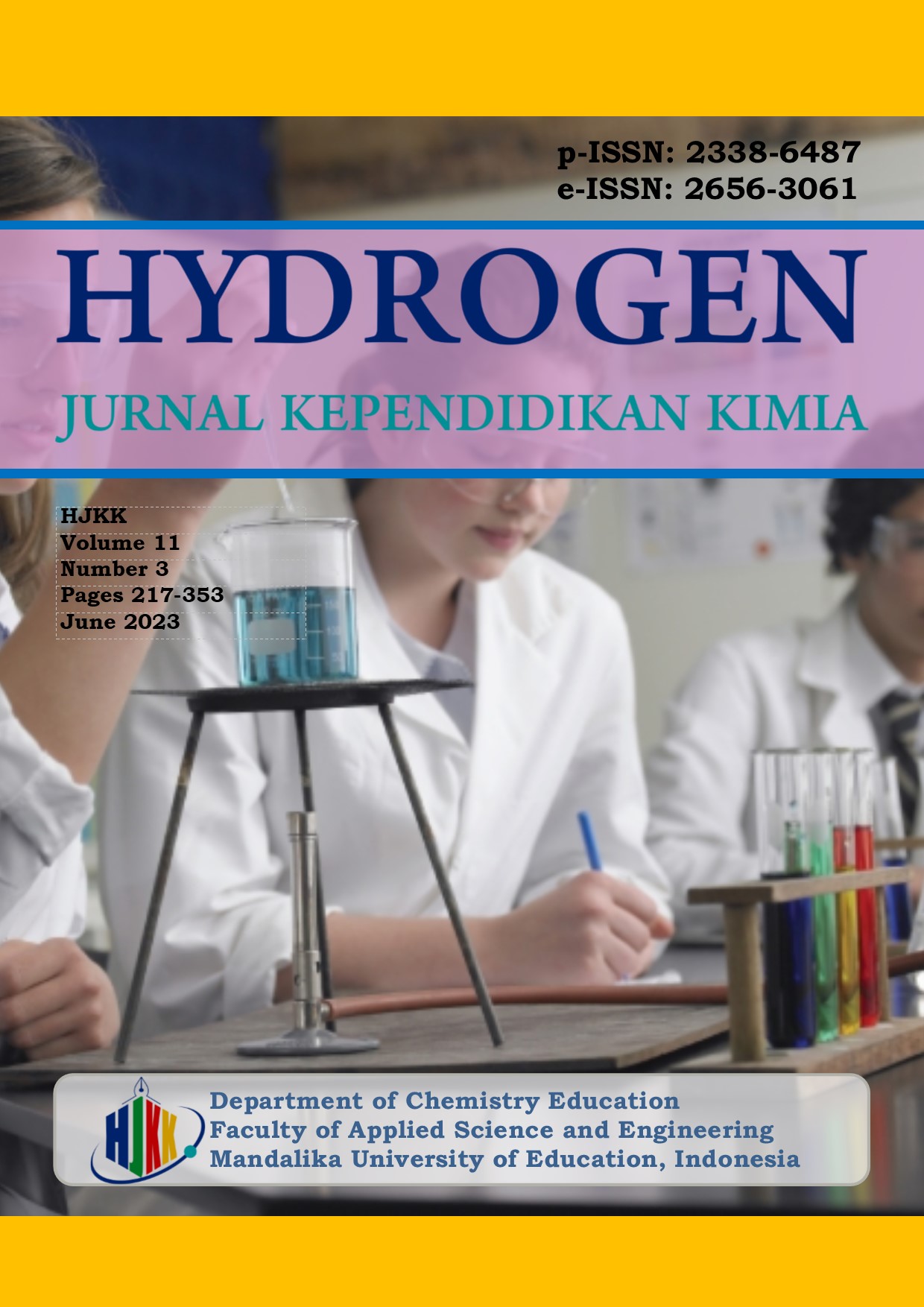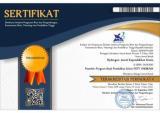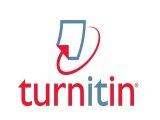Ethnochemistry: Analysis of the Relevance of Material Atomic Structure with the Ngejot Tradition as a Source for Learning Chemistry
DOI:
https://doi.org/10.33394/hjkk.v11i3.7803Keywords:
Ethnochemistry, Sasak local wisdom, Ngejot tradition, Chemistry learning resources.Abstract
Limitations in the form of teaching materials as learning resources in chemistry learning is a problem that occurs quite seriously in secondary schools and in tertiary institutions so the ethnochemistry approach is one form of modification in the development of contextual chemistry teaching materials. This study aims to analyze chemistry teaching materials as a source of learning by exploring the potential of local Sasak wisdom with the ngejot tradition. Data collection techniques through literature, interviews, and documentation using a qualitative approach. The use of Miles & Huberman's qualitative analysis in analyzing the data to be obtained. The research subjects consist of community leaders, chemical content experts, and chemical literature relevant to the research study. Based on the research findings, it can be concluded that Sasak local wisdom with the ngejot tradition can be used as a source of chemistry learning through integrating Sasak local wisdom with the ngejot practice in the concept of atomic structure that there is an arrangement of matter from a negatively charged electron surrounding the atomic nucleus. Thus, the implications of this research can be a source of reference in developing contextual chemistry teaching materials so as to make learning more meaningful.
References
Abramova, I., & Greer, A. (2013). Ethnochemistry and human rights. Chemistry and Biodiversity, 10(9), 1724–1728. https://doi.org/10.1002/cbdv.201300211
Ador, N. K. S. (2017). Ethnochemistry of Maguindanaons’ on the Usage of Household Chemicals: Implications to Chemistry Education. Journal of Social Sciences (COES&RJ-JSS), 6(2S), 8–26. https://doi.org/10.25255/jss.2017.6.2s.8.26
Fadli, A. (2018). Chemical Bonding and Local Islamic Wisdom of Sasak Tribe, Lombok, West Nusa Tenggara. IBDA` : Jurnal Kajian Islam Dan Budaya, 16(1), 53–67. https://doi.org/10.24090/ibda.v16i1.1389
Fadli, A. (2019). Analisis Sikap Ilmiah Calon Guru PAI dalam Perspektif Gender. 8(2), 51–58.
Fadli, A., & Irwanto. (2020). The effect of local wisdom-based ELSII learning model on the problem solving and communication skills of pre-service islamic teachers. International Journal of Instruction, 13(1), 731–746. https://doi.org/10.29333/iji.2020.13147
Hajar, I., & Budi, L. G. P. A. (2014). Penerapan strategi belajar analogi dalam model pembelajaran langsung pada standar kompetensi menerapkan dasar-dasar teknik digital di SMK Negeri 5 Surabaya. Jurnal Pendidikan Teknik Elektro, 3(3), 31–37.
Hasanah, J., Wahyudiati, D., & Ningrat, H. K. (2016). Pengembangan Kartu Bergambar Sains Sebagai Media Pembelajaran Biologi Pokok Bahasan Sistem dalam Kehidupan Tumbuhan Kelas VIII MTS Darul Aman Selagalas Tahun Pelajaran 2015/2016. Biota, 9(2), 241–255.
Rahmawati, Y., Ridwan, A., & Nurbaity. (2017). Should we learn culture in chemistry classroom? Integration ethnochemistry in culturally responsive teaching. AIP Conference Proceedings, 1868. https://doi.org/10.1063/1.4995108
Rosa, M., & Clark, D. (2011). Ethnomathematics: the cultural aspects of mathematics. Revista Latinoamericana de Etnomatemática: Perspectivas Socioculturales de La Educación Matemática, 4(2), 32–54.
Sumardi, L., Rohman, A., & Wahyudiati, D. (2020). Does the teaching and learning process in primary schools correspond to the characteristics of the 21st century learning? International Journal of Instruction, 13(3), 357–370. https://doi.org/10.29333/iji.2020.13325a
Sumardi, L., & Wahyudiati, D. (2021). Using Local Wisdom to Foster Community Resilience During the Covid-19 Pandemic: A Study in the Sasak Community, Indonesia. Proceedings of the 2nd Annual Conference on Education and Social Science (ACCESS 2020), 556(Access 2020), 122–127. https://doi.org/10.2991/assehr.k.210525.059
Sundawan, M. (2016). Perbedaan Model Pembelajaran Konstruktivisme dan Model Pembelajaran Langsung. Jurnal logika, Vol XVI, No 1. www.e-journal.unswagati-crb.ac.id.
Sutrisno, H., Wahyudiati, D., & Louise, I. S. Y. (2020). Ethnochemistry in the Chemistry Curriculum in Higher Education: Exploring Chemistry Learning Resources in Sasak Local Wisdom. Universal Journal of Educational Research, 8(12A), 7833–7842. https://doi.org/10.13189/ujer.2020.082572
Wahyudiati, D. (2016). Analisis Efektivitas Kegiatan Praktikum Sebagai Upaya Peningkatan Hasil Belajar Mahasiswa. Jurnal Tatsqif, 14(2), 143–168. https://doi.org/10.20414/jtq.v14i2.27
Wahyudiati, D., Rohaeti, E., Irwanto, Wiyarsi, A., & Sumardi, L. (2020). Attitudes toward chemistry, self-efficacy, and learning experiences of pre-service chemistry teachers: Grade level and gender differences. International Journal of Instruction, 13(1), 235–254. https://doi.org/10.29333/iji.2020.13116a
Wahyudiati, D., Sutrisno, H., & Louise, I. S. Y. (2019). Investigation Of Attitudes Toward Chemistry And Learning Experiences of Pre-Service Chemistry Teachers. MIER Journal of Educational Studies, Trends and Practices, 9(2).
Wahyudiati, D. (2020). Pengembangan model pembelajaran berbasis masalah terintegrasi kearifan lokal Sasak (PBMTKLS) pada pembelajaran kimia untuk keterampilan proses sains, sikap ilmiah, dan prestasi kognitif mahasiswa. (Disertasi). Program Pascasarjana Universitas Negeri Yogyakarta, Yogyakarta.
Wahyudiati, D & Fitriani. (2021). Etnokimia: eksplorasi potensi kearifan lokal Sasak sebagai sumber belajar kimia. Jurnal Pendidikan Kimia Indonesia, 5(2), https://doi.org/10,23887/jpk.v512.38 537
Wiwit; Ginting, S. M., & Firdaus, M. L. (2013). Penerapan Pembelajaran Kimia Dasar Menggunakan Media Powerpoint 2010 Dan Phet Simulation Dengan Pendekatan Modification Of Reciprocal Teaching Berbasis Konstruktivisme. Exacta, 11(1), 29–32.
Downloads
Additional Files
Published
How to Cite
Issue
Section
Citation Check
License
License and Publishing Agreement
In submitting the manuscript to the journal, the authors certify that:
- They are authorized by their co-authors to enter into these arrangements.
- The work described has not been formally published before, except in the form of an abstract or as part of a published lecture, review, thesis, or overlay journal.
- That it is not under consideration for publication elsewhere,
- That its publication has been approved by all the author(s) and by the responsible authorities – tacitly or explicitly – of the institutes where the work has been carried out.
- They secure the right to reproduce any material that has already been published or copyrighted elsewhere.
- They agree to the following license and publishing agreement.
Copyright
Authors who publish with Hydrogen: Jurnal Kependidikan Kimia agree to the following terms:
- Authors retain copyright and grant the journal right of first publication with the work simultaneously licensed under a Creative Commons Attribution License (CC BY-SA 4.0) that allows others to share the work with an acknowledgment of the work's authorship and initial publication in this journal.Â
- Authors are able to enter into separate, additional contractual arrangements for the non-exclusive distribution of the journal's published version of the work (e.g., post it to an institutional repository or publish it in a book), with an acknowledgment of its initial publication in this journal.
- Authors are permitted and encouraged to post their work online (e.g., in institutional repositories or on their website) prior to and during the submission process, as it can lead to productive exchanges, as well as earlier and greater citation of published work.
Licensing for Data Publication
Hydrogen: Jurnal Kependidikan Kimia uses a variety of waivers and licenses, that are specifically designed for and appropriate for the treatment of data: Open Data Commons Attribution License, http://www.opendatacommons.org/licenses/by/1.0/ (default) Other data publishing licenses may be allowed as exceptions (subject to approval by the editor on a case-by-case basis) and should be justified with a written statement from the author, which will be published with the article.









